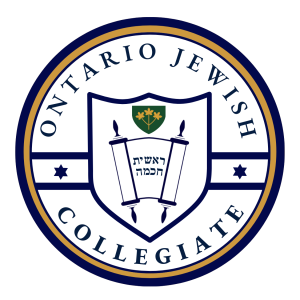A genizah is a storeroom or depository, usually in a synagogue, where worn-out Hebrew books or papers are placed. Holy works are hidden away for centuries – sometimes forever, often never to be seen again. When discovered, as happened in Cairo in the 19th century, a genizah can be a priceless resource where Jewish scholarship and tradition are revealed.
The web is emerging as a type of digital genizah. Hundreds of Jewish books, many of which had vanished for centuries are now being made available to new generations of admirers. Most of these volumes are in the public domain.
Hebrewbooks.org has set for itself a daunting goal: “to include on its site all Torah sefarim [books] ever printed.” As the site explains, “If you were to ask any rabbi who authored a sefer, what his one wish would be, his answer would surely be, ‘I want people to learn my sefer, even after my passing’. … Our rabbis of blessed memory teach us that ‘He who quotes a saying in the name of its author hastens the redemption of the world.’” The site already has over 55,000 books for free download. A brief video explains the scanning process.
For more remarkable finds, over at the the Digitized Manuscripts Collection at the National Library of Israel, you can view the 10th-century “Crown of Damascus” Torah, a worldwide collection of ketubot and a treasury of talmudic manuscripts along with the impressive Jewish National and University Library Digitized Book Repository with its 1,100 volumes.

The National Library of Canada houses the Jacob M. Lowy Collection of old and rare Hebraica and Judaica. The Penn/Cambridge Genizah Fragment Project allows you to view over 6,000 documents salvaged from the Cairo Genizah.
While all the sites mentioned so far can be accessed for free, Otzar HaHochma (the Treasury of Wisdom) charges access to what it calls “the most comprehensive computerized library of its kind encompassing all realms of Judaism from ancient times to the modern period.”
Its 76,500 Judaic books include all of the essential sefarim and most other useful sefarim as well as ancient and rare books, original manuscripts, periodicals, Torah collections and contemporary books.”
Not every book written in Hebrew is holy or ancient or even printed on paper nowadays. That’s where WikiSefer comes in. WikiSefer is part of the same organization which oversees Wikipedia. Its goal is to create free online textbooks and manuals in Hebrew with titles already available on a wide range of topics including cooking, university mathematics, Esperanto, Java basics and the history of Spain.
If you still want to get the feel of a real book in your hands and you have a few bucks to spare (about $25 million or so), you can follow in the footsteps of Jack V. Lunzer whose love of Jewish books predates the Internet era. A lifelong bibliophile, Lunzer amassed 13,000 Jewish books and manuscripts from far flung centres including Paris, Izmir, Bombay, Cochin, Cremona, Jerusalem, Ferrara, Calcutta, Shanghai, Alexandria and Baghdad. Known as the Valmadonna Trust Library, it includes:
• A Torah from England, handwritten in 1189 and looted the next year during the destruction of the Jewish community of York.
• The earliest illustrated Haggadah known to exist, printed in Prague in 1526.
• A 19th century copy of A Thousand and One Nights from Calcutta, in Arabic spelled out in Hebrew script.
Sotheby’s experts and Jack Lunzer, custodian of the Valmadonna Trust Library, tour the unique collection of Hebrew books and manuscripts.
In 2009, Lunzer put his library up for sale through Sotheby’s. Several volumes have been sold but most of the collection is still available as of 2016. The New York Times has created a lovely profile and slideshow of this magnificent library and of Lunzer, who will not be benefiting from the sale.
Adjacent to the Vallmaddona collection, you can find inscribed the words of the 12th-century Spanish Jewish scholar, Judah Ibn Tibbon. “Make books your companions; let your bookshelves be your gardens: bask in their beauty, gather their fruit, pluck their roses, take their spices and myrrh. And when your soul be weary, change from garden to garden, and from prospect to prospect.”






